Basically the theme of today was just loitering about not doing much of anything. It rained heavily for most of the day anyway.
There was a package of kiwi spoons waiting for me. I had come across the kiwi spoon when I first arrived (you may even recall the picture of me using one at the Island Bay Festival). Anyway, I emailed the company (Southern Produce http://www.southernproduce.co.nz/) and they were generous enough to send me a whole bunch of them for free!

They are a spoon AND knife.. so much more pratical than sporks!
SOMES ISLAND (Day 70 - part 1)
The weather was a bit nicer today so we decided to take the ferry to Matiu (or Somes Island) in the middle of the Wellington harbor. We had a quick breakfast then caught the bus downtown to the Dominion Post Ferry wharf. We bought our tickets then waited around the dock a bit until we were allowed to board.
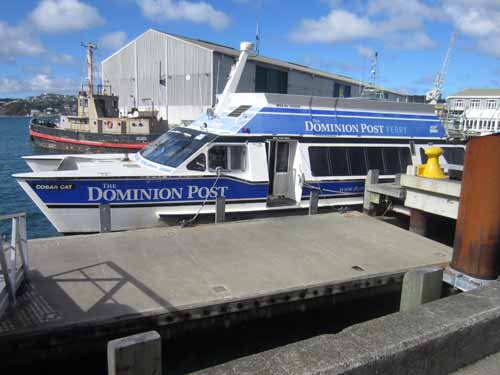
Our catamaran... the Cobar Cat
We sat downstairs, inside, at the front behind the captain and the service counter. There was quite the bar on board, ranging from beer and wine to champagne and shots! This is also a commuter ferry to the other side of the bay.
It wasn't a long ride, only 15 - 20 minutes, but it was quite a rocky one! Water sprayed the windows as the boat sped toward the small island.
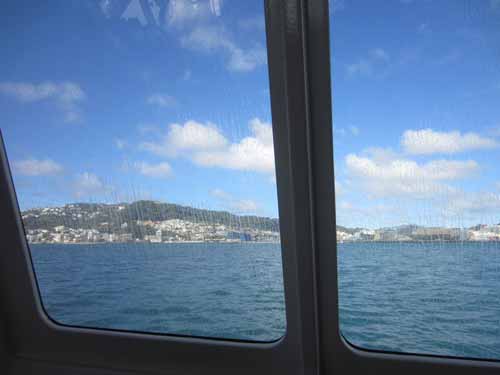
There was only one dock on Somes Island. We disembarked and were led directly to the Whare Kiore (or Rat House). We got a history lesson from the ranger who then asked us to check all our bags, pockets and shoes for anything that might be considered a "pest"... seeds, dirt, ants, even mice. They had worked very hard to eliminate all non-native plants and animals from the island in order to reestablish some of the more fragile native species. The island had been pest-free for 10 years and they were hoping to keep it that way.
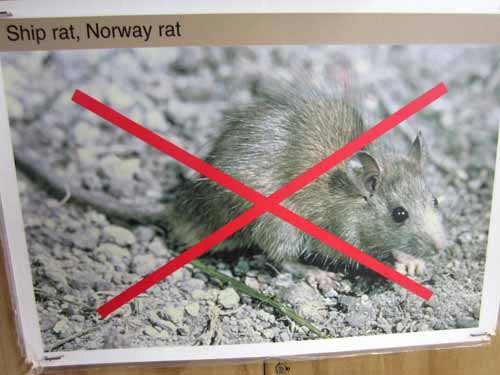
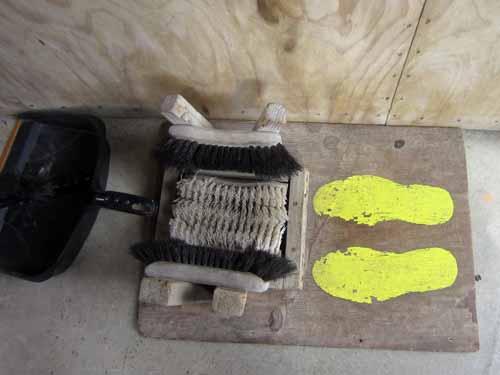
Eventually we were released into the wild. There were many different paths to follow, but we decided to first wrap our way around the outside of the island and then make our way back through the center.

Looking back at the pier and Rat House
We headed up a steep hill. At the top was a ranger who told us a bit of history about Mokopuna (or Leper Island). In 1903, a 56 year-old man named Kim Lee was quarantined on this tiny island under the belief that he had leprosy. He was given food and supplies via a rope-pulley system... but let's face it, it's a very small, harsh place to live, and after three months in isolation, he perished (most likely from tuberculosis). An autopsy revealed afterwards that he did NOT have leprosy.
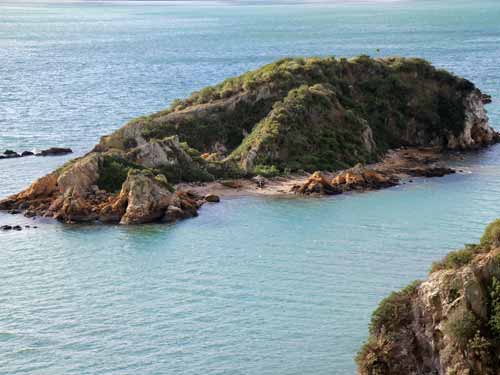
Mr. Lee's island home
Somes Island was also used as a quarantine station for potentially disease-infected ships (such as those carrying whooping cough, typhoid fever,, measles, smallpox, etc). It was hardly set up very well, and when in 1872 the immigrant ship England was forced to land, the accommodations were severely lacking. After six weeks, those who were still healthy were allowed to leave, while those who had died were buried in a small cemetery here.
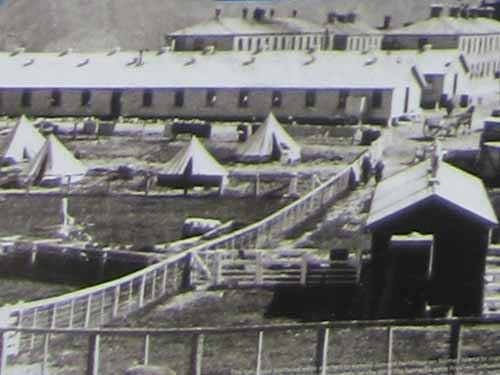
The lovely confines
The station continued to function for the next half a century, fumigating passengers and crew in a building near the water's edge. It was later learned that the chemicals they used were more toxic for the people than anything they might have had.
It was last used from 1918-1920 for a flu epidemic, but the disease was so pervasive that isolating victims on the island did little to prevent it from spreading. The station was closed down within a year. In 1970, the individual gravestones and markers were removed and replaced with a monument.
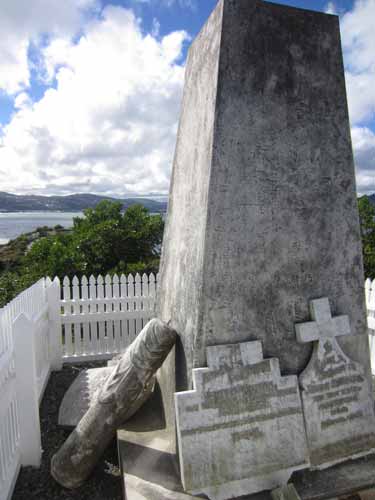
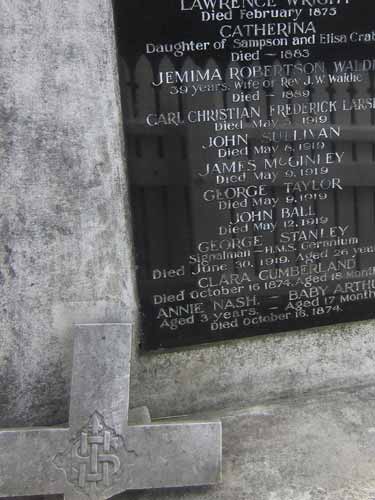
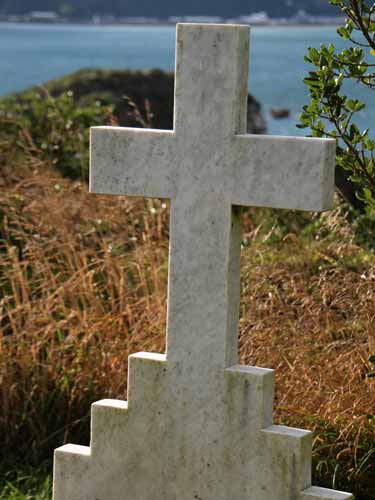
The ranger then came up to us again and offered to show us a couple tuataras. We followed him down the trail to the first one. It was underneath a log. Wow was it hard to see... even when he told us exactly where to look! The second one was down the path a bit further. It was hiding in a penguin hole. In spite of its large size, it too was difficult to spot.
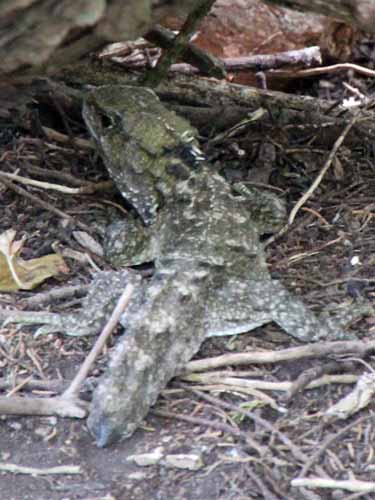
This one was missing part of its tail.
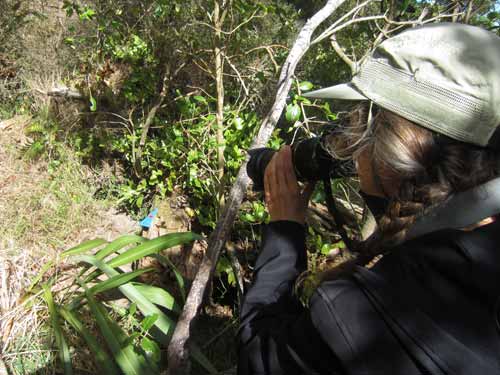
Yes, it's in there!

The Brothers Island tuatara
Tuataras are the definition of slow. Let's demonstrate it this way: they were introduced to this micro corner of this tiny island 20 years ago. They still haven't expanded to reach even the middle of the island yet.
Scattered around the island are 'weta hotels'... dark boxes where the weta like to hang out. There's a thick plastic inner lid on the box, so you can peek in at them without either party getting hurt.
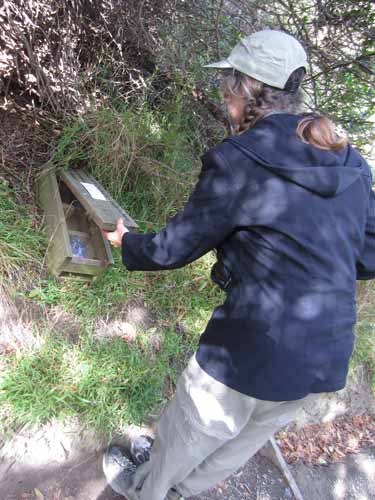
Checking to see if anybody's home
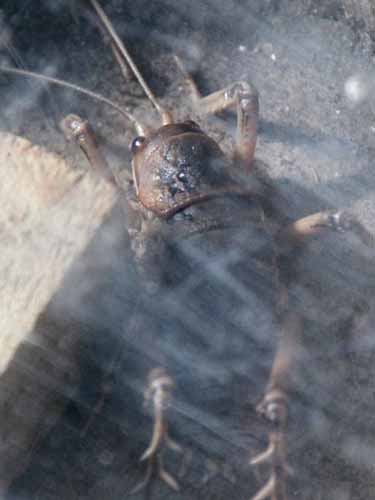
Yup!
The Cook Strait Giant Weta is slow moving and can not jump. They are nocturnal (hiding under logs during the day) and vegetarian (eating grass and clover). There are around 1,500 of them on the island. The name weta comes from the Maori "Wetapunga," meaning 'God of ugly things.'
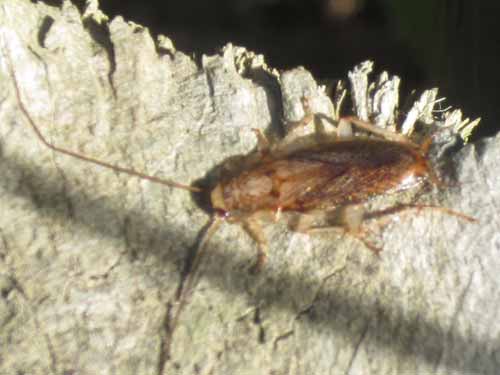
A much smaller weta
We then made our way around the island, admiring the vibrant color of the water and the gorgeous plants and tall trees. There were many sea birds about. Unfortunately the lighthouse was closed for repairs.
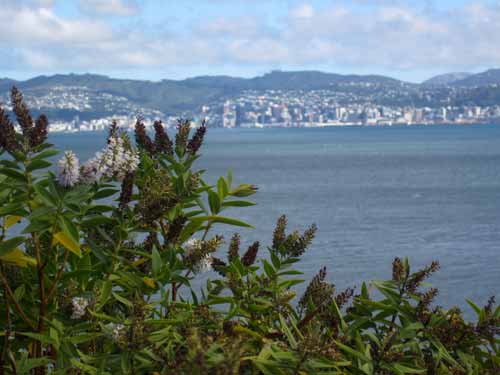
A view of Wellington
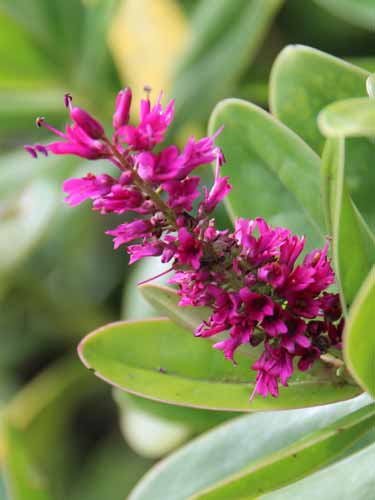
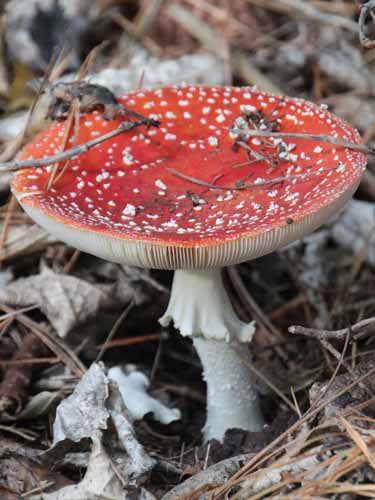
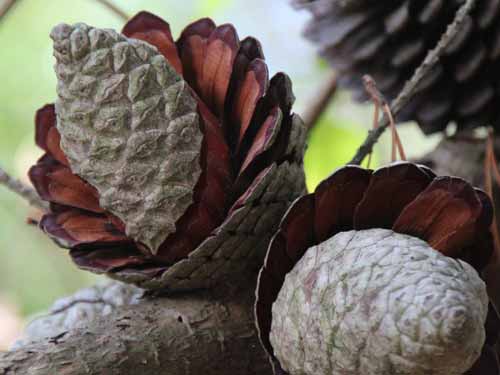
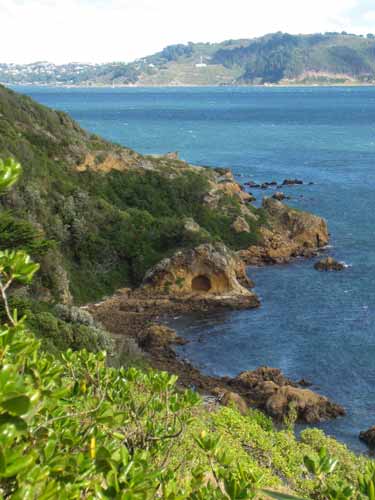

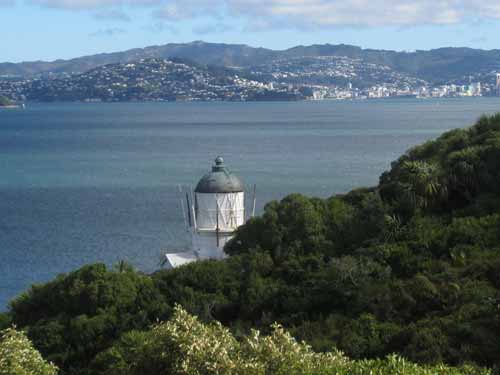
The lighthouse
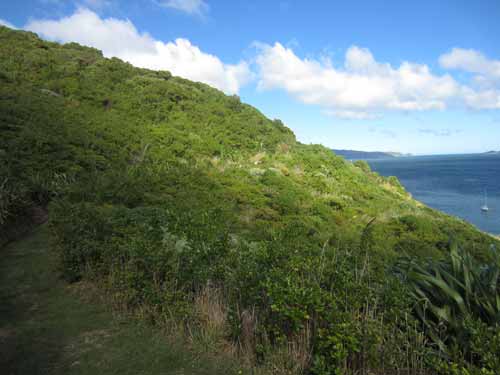
Everything was so lush and vibrant! Even our trail was green!
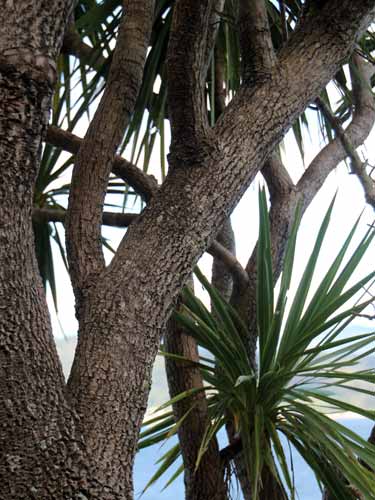

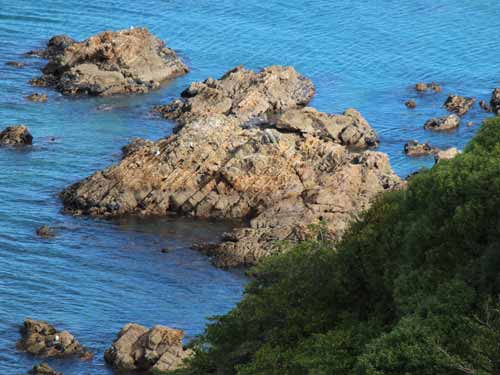
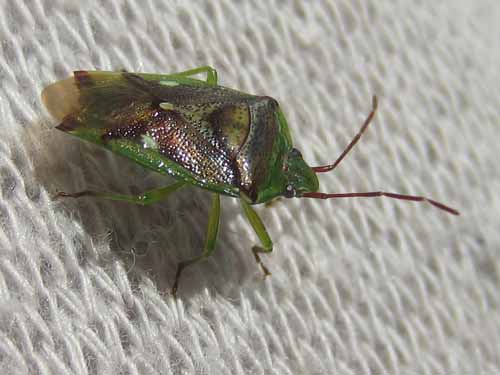
A shiny bug tries to get a free ride off of Regan.

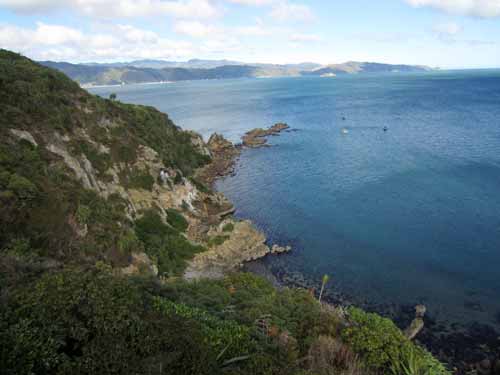
The white on the cliff is from nesting shags (or cormorants)

The Spotted Shag is only found in New Zealand.
We started heading inland up a very steep hill. At the top were the gun emplacements. The five concrete structures were the remains of WWII heavy anti-aricraft artillery, built in 1942. At the time of construction, enemy planes and submarines had been spotted nearby. But by completion, the Allied Forces' position in the Pacific had strengthened so the threat of invasion was reduced. These guns were never fired.
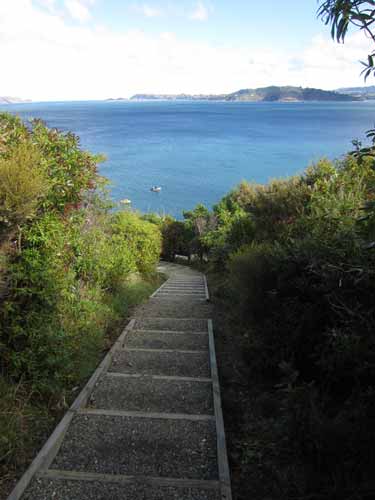
Looking down the steep climb
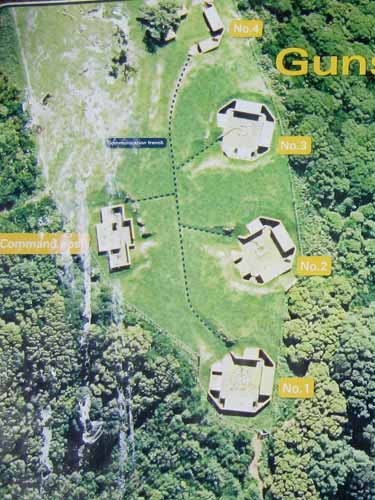
Aerial photo of the fun emplacements
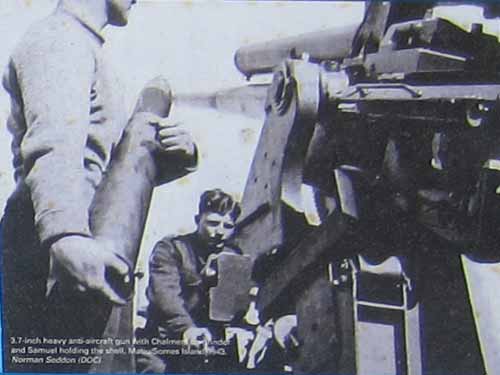
Each 3.7-inch calibre gun could fire 10-12 rounds per minute.
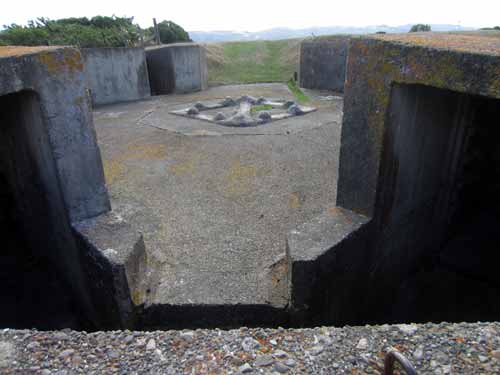
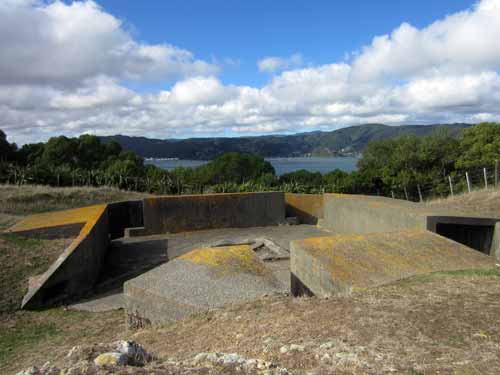

The shadow wave
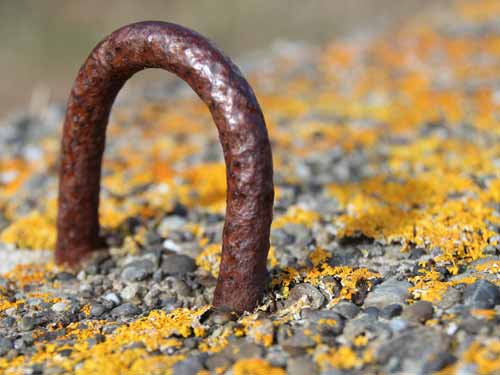
We continued our exploration of the island...

